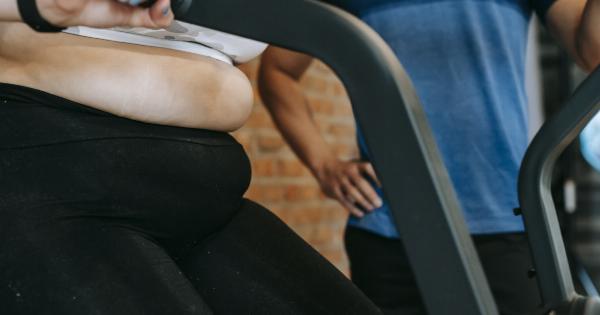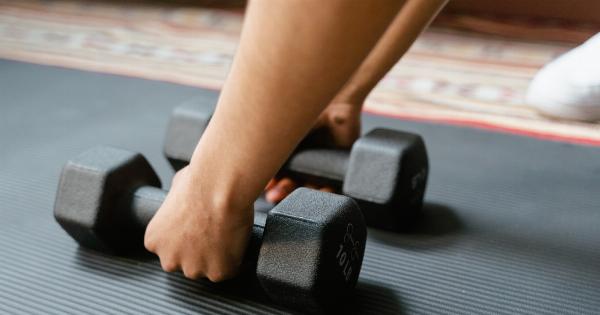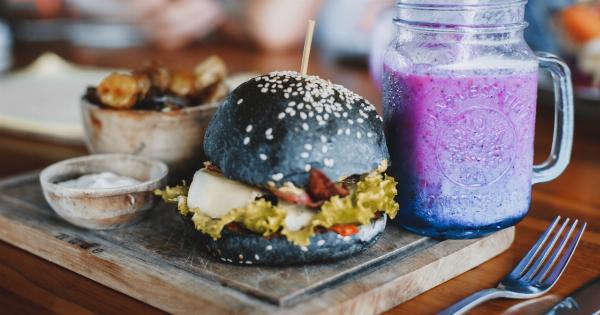When it comes to losing weight, one of the most popular goals is to burn fat. However, there are many myths and misunderstandings surrounding this process. In this article, we aim to clear up some of the most common misconceptions about burning fat.
The Myth: You Can Spot Reduce Fat
One of the most pervasive myths in the world of fitness is spot reducing fat. The idea that you can target certain areas of your body and burn fat in those specific regions is simply not true.
When you exercise, your body burns calories from all over your body, not just from the area you are working on. Therefore, sit-ups and crunches won’t help you lose belly fat more effectively than any other type of exercise.
The Myth: Cardio is the Best Way to Burn Fat
While cardio is an excellent way to burn calories and fat, it’s not the only way. Strength training can be just as effective, if not more so. When you build muscle, your body burns more calories even when you’re at rest.
This means that the more muscle you have, the more calories you burn throughout the day, leading to more fat loss over time.
The Myth: You Can Out-Exercise a Bad Diet
Many people believe that they can eat whatever they want as long as they exercise enough to burn it off. While it’s true that exercise burns calories, it’s a lot harder to burn off calories than it is to consume them in the first place.
For example, it takes about an hour of moderate-intensity exercise to burn off a slice of pizza. So, while exercise is an important part of any weight loss plan, it’s not a license to eat whatever you want.
The Myth: Fat-Burning Supplements Are Magic
There are countless supplements on the market claiming to burn fat and help you lose weight. While some supplements may contain ingredients that can boost your metabolism or reduce your appetite, they are not magic pills.
The only proven way to lose weight is to create a calorie deficit, either by eating fewer calories, burning more calories through exercise, or both.
The Myth: Low Intensity Cardio is Better for Fat Burning
Many people believe that lower intensity exercise is better for burning fat, as opposed to higher intensity exercise.
This is based on the idea that your body burns more calories from fat during lower intensity exercise, and more calories from carbohydrates during higher intensity exercise. While this is true, it’s important to note that you burn more overall calories during higher intensity exercise, which can lead to more fat loss over time.
Additionally, higher intensity exercise can help you build more muscle, which, as we’ve already discussed, can lead to more fat loss over time.
The Myth: You Need to Eat a Low-Fat Diet to Burn Fat
The idea that you need to eat a low-fat diet to burn fat is another common misconception. While it’s true that some fats are unhealthy and should be limited, healthy fats are an essential part of a balanced diet.
In fact, some studies have suggested that a low-carb, high-fat diet may be more effective for weight loss than a low-fat diet.
The Myth: Exercise is the Only Way to Burn Fat
While exercise is important for burning fat and losing weight, it’s not the only way. In fact, diet plays a much larger role in weight loss than exercise does. As we mentioned earlier, you can’t out-exercise a bad diet.
Therefore, if your goal is to burn fat, you need to focus on both exercise and diet.
The Myth: You Can Lose Fat Without Losing Muscle
When you lose weight, you don’t just lose fat – you also lose muscle. However, many people believe that they can lose weight without losing muscle.
While it’s certainly possible to minimize muscle loss during weight loss, it’s not possible to completely avoid it. The key is to focus on strength training and high-protein diet to help minimize muscle loss.
The Myth: Fat-Free Foods are Better for Burning Fat
Another common myth is that fat-free foods are better for burning fat, as they contain fewer calories.
While it’s true that some fat-free foods can be lower in calories, they often contain added sugars and artificial ingredients to make up for the lack of fat. Additionally, healthy fats are important for keeping you feeling full and satisfied, which can help you stick to your diet long-term.
The Myth: Fat Burning Workouts are the Most Effective
Finally, many people believe that fat burning workouts, such as high-intensity interval training (HIIT), are the most effective for burning fat. While these types of workouts can be effective, they’re not the only option.
In fact, any type of exercise that raises your heart rate and burns calories can be effective for burning fat. The key is to find an activity you enjoy and can stick to long-term.



























